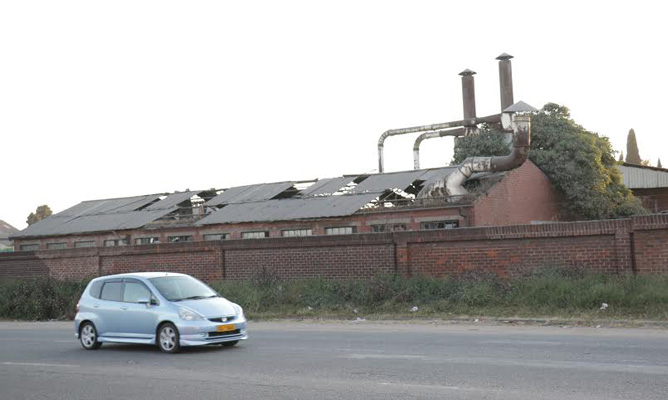
Capacity utilisation in the manufacturing sector declined to 34,4% in 2015 attributed to capital constraints and antiquated machinery, a new report by the Confederation of Zimbabwe Industries (CZI) has shown.
BY TARISAI MANDIZHA Last year, capacity utilisation was 36,5%.

CZI chief economist Dephine Mazambani-Mutaferi said the constraining factors had largely remained the same as compared to last year.
“Capacity utilisation remains a key factor in measuring performance of the manufacturing sector. In 2014 capacity utilisation was 36,5% and this year capacity utilisation is at 34,3%, indicating a 2,2% decline. The constraints to capacity utilisation have largely remained the same: low local demand, high cost of doing business, competition from imports, capital constraints and antiquated machinery,” Mazambani-Mutaferi said yesterday at the launch of the report.
She said businesses in the country had not been viable, with only 5% indicating viablility. Sixty-three percent indicated that they were facing stiff competition from both local and international products.
Mazambani-Mutaferi said on the export front, Zambia remained the top destination for Zimbabwean goods followed by South Africa, Malawi and Mozambique.
She, however, said the reason companies were not exporting was lack of export incentives, high cost of doing business, limited capacity and the costs associated with exporting.
- Chamisa under fire over US$120K donation
- Mavhunga puts DeMbare into Chibuku quarterfinals
- Pension funds bet on Cabora Bassa oilfields
- Councils defy govt fire tender directive
Keep Reading
Mazambani-Mutaferi listed the problems being faced by companies in exporting as complexities on procedures, delays, corruption at the borders and failing to meet customer requirements.
She said 84% of respondents indicated that infrastructure in Zimbabwe was poor. They said the available infrastructure was unable to sustain economic growth with power and water shortages, and poor road and railway infrastructure.
Thirty-eight percent of the respondents said the country would be in recession in the next year, 40% indicated slight growth and 89% said the country would remain in deflation mode due to low demand, dwindling production and lack of foreign direct investment.
Industry and Commerce minister Mike Bimha told guests at the launch of the report that government was encouraging research-based information to formulate good policies.
“As government we also want to formulate policy based on research. I think if you don’t do that you end up with policies based on what you think. We should encourage research-based information. The importance of this survey and the previous one is we look at where we are heading.
“We believe they is much that needs to be done, yes, there are challenges. Some have gone through those challenges before, others have gone through the same situation like ours. I believe we can do it. Yes, the pace might be slow, but the direction is good and I believe we are getting there,” Bimha said.
Competition from cheap imports, unavailability of funds for retooling, low consumer demand, high production costs and lack of long-term funding has adversely affected the manufacturing sector.
Use of the multicurrency regime has been credited with reviving capacity utilisation in the manufacturing sector.
However, the sector is still stuck with antiquated machinery and cannot access long-term capital for retooling. In 2009, capacity utilisation was around 10%, rising to 57,2% in 2011.











